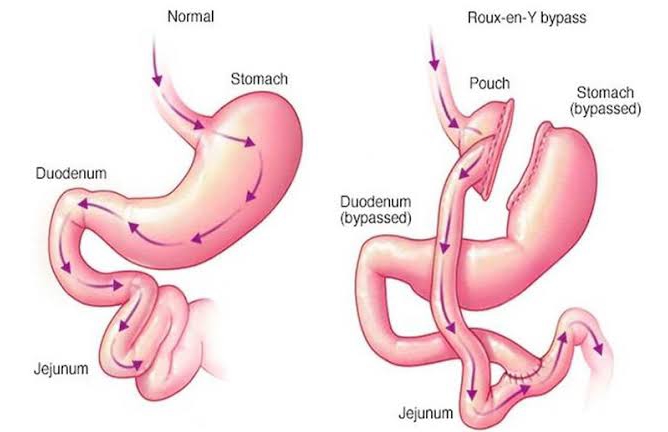Lapsurgery.com.au, Roux y gastric bypass Process – Roux-en-Y gastric bypass (RYGB) is a surgical procedure that plays a crucial role in treating severe obesity. During the process, a small stomach pouch is created by stapling the upper part of the stomach, restricting the amount of food it can hold. This pouch is then connected directly to the small intestine, bypassing a portion of the stomach and the upper part of the small intestine.
Mechanism Roux y gastric bypass

The primary mechanism of RYGB involves both restrictive and malabsorptive components. The reduced stomach size restricts the amount of food intake, promoting a sense of fullness with smaller meals. Simultaneously, the rerouting of the digestive tract alters the absorption of nutrients, leading to decreased calorie absorption.
One of the notable benefits of RYGB is its effectiveness in achieving significant and sustained weight loss. Patients often experience improvements in obesity-related conditions such as type 2 diabetes, hypertension, and sleep apnea. Additionally, the procedure has been linked to enhanced insulin sensitivity, contributing to better glucose control.
Potential Roux y gastric bypass
However, like any surgical intervention, RYGB comes with potential risks and complications, including infection, blood clots, and nutritional deficiencies. Patients undergoing this procedure require long-term follow-up care, monitoring, and adherence to dietary guidelines and nutritional supplements.
Closing
In conclusion, Roux-en-Y gastric bypass is a transformative surgical procedure for individuals struggling with severe obesity. While it presents a viable option for weight loss and improved health outcomes, it necessitates careful consideration of potential risks and long-term commitment to lifestyle changes for optimal results.